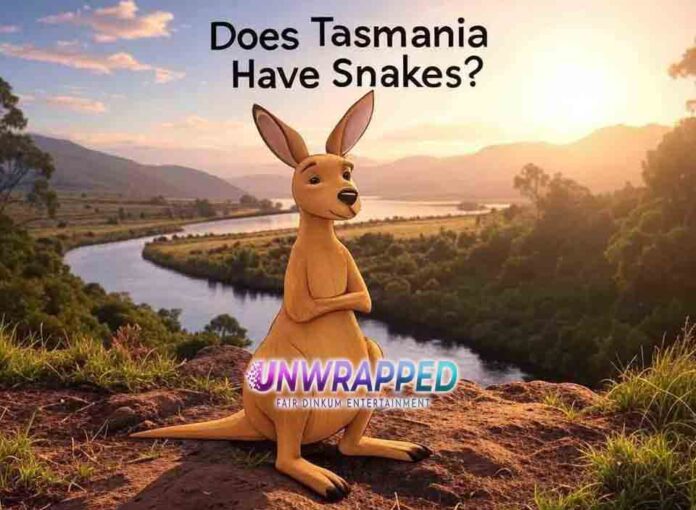Tasmania, with its pristine wilderness and unique biodiversity, is home to a variety of fascinating creatures. For those curious about the wildlife, a common question arises: Does Tasmania have snakes? The answer is yes, Tasmania does have snakes, and all of them are venomous. However, they are generally shy and pose little threat to humans if left undisturbed.
This guide provides everything you need to know about snakes in Tasmania, including the species found on the island, where they live, what to do if you encounter one, and how to stay safe.
The Snakes of Tasmania: What You Need to Know
Tasmania is home to three species of snakes, all of which are venomous. Despite this, snake bites are extremely rare as these reptiles are not aggressive and prefer to avoid humans.
The Three Snake Species in Tasmania:
- Tiger Snake (Notechis scutatus)
- Appearance: The tiger snake is easily recognizable by its banded pattern, which may vary from dark brown to olive green. However, some individuals can be entirely black.
- Venom: Highly venomous, with venom that can cause paralysis or blood clotting issues if untreated.
- Habitat: Found near water sources such as rivers, wetlands, and marshes.
- Behavior: Typically shy but may become defensive if threatened.
For more information, visit Australian Museum.
- Lowland Copperhead (Austrelaps superbus)
- Appearance: The lowland copperhead has a sleek body with colors ranging from coppery brown to black.
- Venom: Highly venomous, but bites are extremely rare as these snakes are elusive.
- Habitat: Commonly found in grasslands, marshes, and coastal dunes.
- Behavior: Known for being shy and retreating at the first sign of danger.
- White-lipped Snake (Drysdalia coronoides)
- Appearance: The smallest of Tasmania’s snakes, it has a slender body with a light green or brown color and a distinctive white stripe along its lip.
- Venom: Mildly venomous, posing little threat to humans.
- Habitat: Prefers cooler, wetter areas, such as forests and heathlands.
- Behavior: Shy and reclusive, rarely encountered by humans.
Where Do Snakes Live in Tasmania?
Tasmania’s snakes are widely distributed across the island, thriving in a variety of habitats. While they are not as commonly encountered as on mainland Australia, understanding where they live can help you stay informed.
Common Snake Habitats in Tasmania:
- Wetlands and Rivers: Tiger snakes and copperheads are often found near water sources, as these areas attract their prey, including frogs and small mammals.
- Grasslands and Forests: Lowland copperheads and white-lipped snakes inhabit open grasslands and forested areas, where they can hunt and find cover.
- Coastal Regions: Some snakes, particularly copperheads, can be found in coastal dunes and scrublands.
- Suburban Areas: Occasionally, snakes may wander into gardens or parks, especially in areas near bushland or water.
Despite their wide distribution, snakes are rarely seen in urban areas or densely populated regions.
Are Snakes in Tasmania Dangerous?
While all of Tasmania’s snakes are venomous, they are generally not a threat to humans. Snake bites are extremely rare, as these reptiles are non-aggressive and tend to avoid confrontation.
Key Facts About Snake Safety:
- Defensive Behavior: Snakes will only strike if they feel threatened or cornered.
- Low Incidence of Bites: Snake bites in Tasmania are uncommon, with fatalities even rarer thanks to accessible medical care.
- Antivenom Availability: Hospitals in Tasmania are equipped with antivenom for all local snake species.
If you give snakes space and avoid provoking them, the likelihood of an encounter escalating is minimal.
What to Do If You Encounter a Snake
Coming across a snake in the wild can be unnerving, but staying calm and following these steps can ensure a safe outcome for both you and the snake.
- Stay Calm
Snakes are more afraid of you than you are of them. Remaining calm will reduce the chance of the snake feeling threatened. - Keep Your Distance
Move away slowly and give the snake plenty of space to escape. Do not attempt to touch or provoke it. - Don’t Block Its Path
Ensure the snake has a clear route to retreat. Most snakes will move away on their own if not cornered. - Contact Authorities If Necessary
If a snake is in your home or a high-traffic area, contact a licensed snake catcher for safe removal.
For snake removal services in Tasmania, check out Wildlife Rescue Tasmania.
Tips for Staying Safe Around Snakes in Tasmania
When Outdoors:
- Wear Proper Footwear: If hiking, wear sturdy boots and long pants to protect against accidental bites.
- Stick to Trails: Stay on designated paths to reduce your chance of disturbing snakes.
- Avoid Tall Grass and Rocks: Snakes may hide in these areas to stay cool or hunt for prey.
- Be Cautious Near Water: Snakes often bask near rivers or wetlands, so approach these areas with care.
At Home:
- Clear Debris: Remove piles of wood, rocks, or other materials where snakes could hide.
- Keep Lawns Mowed: Short grass reduces hiding spots for snakes.
- Secure Food Sources: Remove pet food or bird seed that could attract rodents, which in turn attract snakes.
Snake Conservation in Tasmania
Snakes play an essential role in Tasmania’s ecosystem, controlling populations of pests like rodents and insects. Despite their importance, they are often misunderstood and unnecessarily feared.
Protecting Tasmania’s Snakes:
- Education and Awareness: Understanding snake behavior and their role in the environment can help reduce unnecessary fear and harm.
- Habitat Conservation: Protecting wetlands, forests, and grasslands ensures snakes can thrive without encroaching on human areas.
For more information on snake conservation, visit Reptiles of Tasmania.
Conclusion: Snakes in Tasmania – Fascinating but Not Fearsome
Yes, Tasmania does have snakes—three species, all of which are venomous but generally shy and non-aggressive. By understanding their behavior and habitats, you can safely enjoy Tasmania’s incredible wilderness without fear. These reptiles are a vital part of the island’s ecosystem, contributing to its rich biodiversity.
Whether you’re hiking through Cradle Mountain or relaxing by a serene wetland, staying snake-aware is key to enjoying all that Tasmania has to offer. Remember, these creatures are more interested in avoiding you than causing harm, so give them the respect and space they deserve.
See Also: Why Is Tasmania Colder Than the Rest of Australia?










